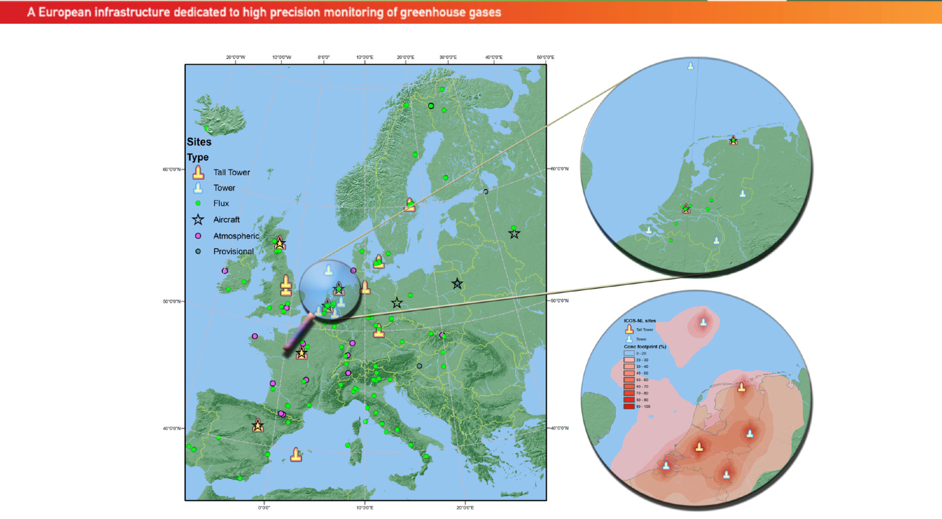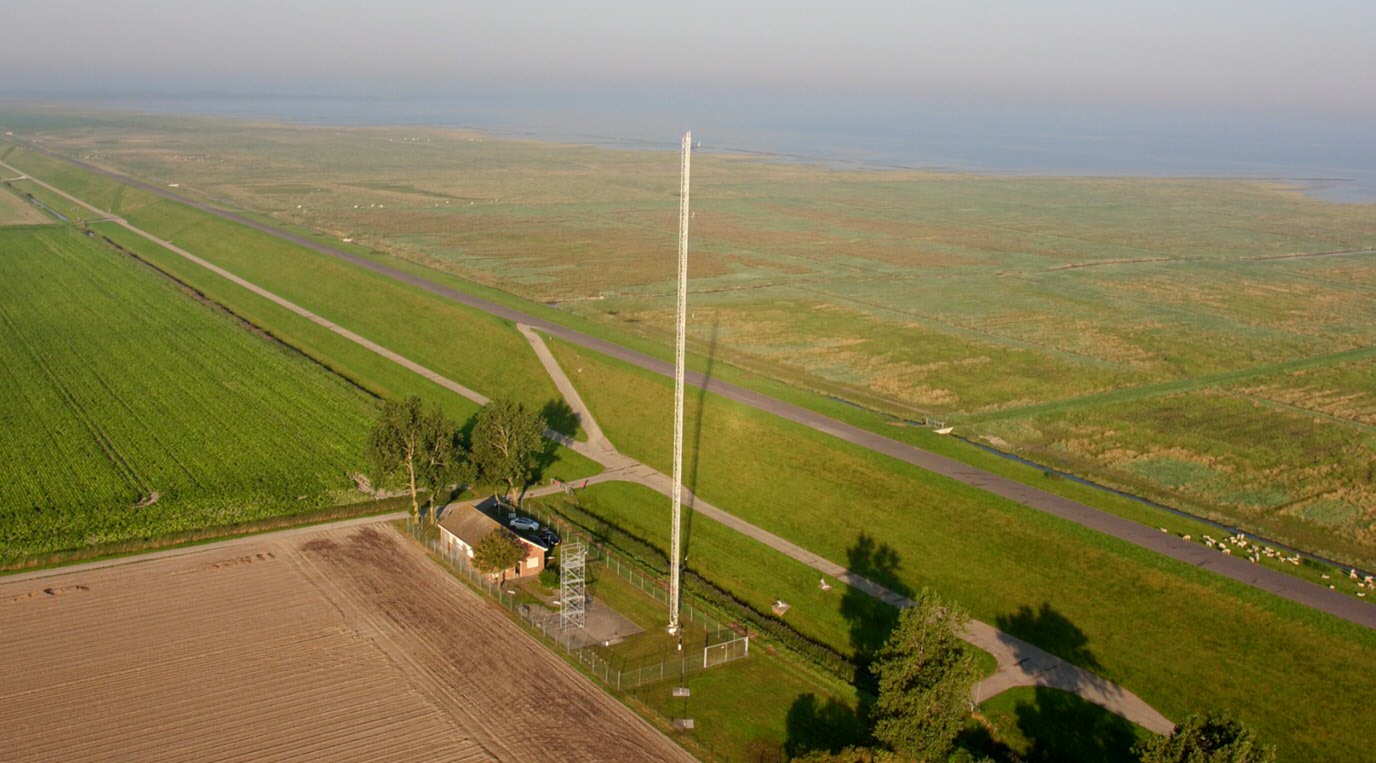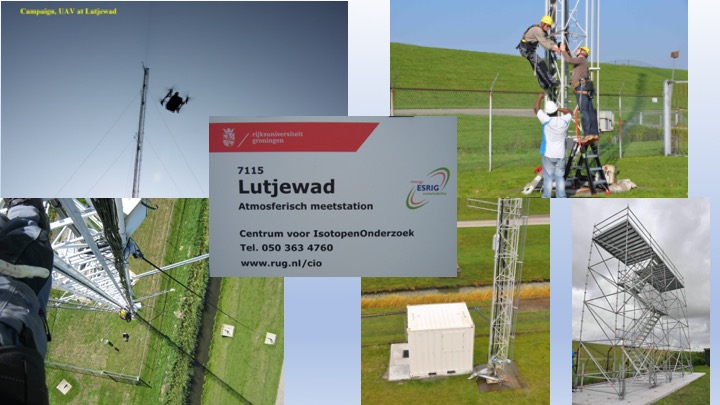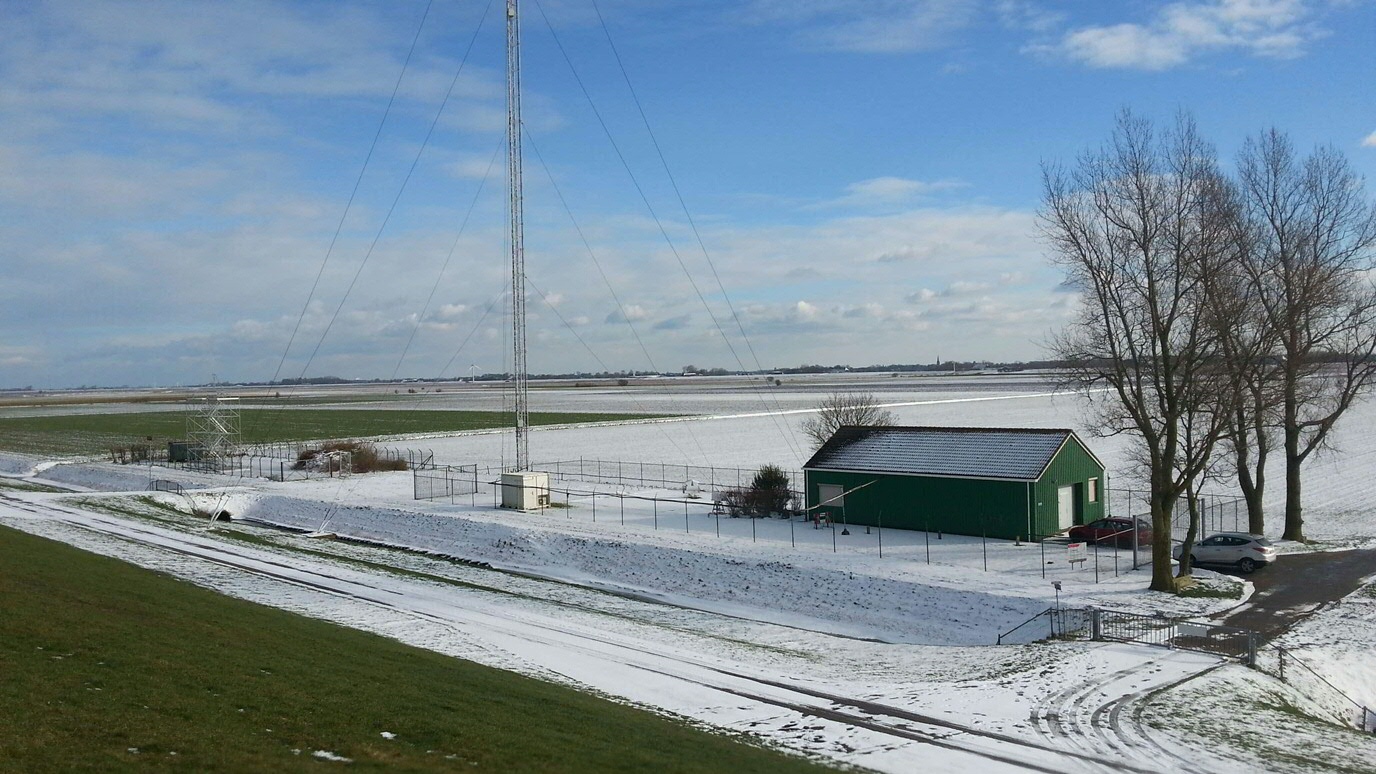Atmosferisch meetstation Lutjewad
Het Centrum voor IsotopenOnderzoek van de Rijksuniversiteit Groningen heeft sinds 2000 een atmosferisch meetstation aan de waddenzeedijk bij Hornhuizen.
Het meetstation bestaat uit een hoge mast van 60 meter met daarnaast een gebouwtje met daarin een laboratorium. Het laboratorium is in het najaar van 2013 volledig vernieuwd. In de mast hangt meetapparatuur voor onderzoek naar het broeikaseffect en er zijn luchtinlaten op 7, 40 en 60 meter hoogte. Lucht wordt via deze inlaten naar het laboratorium gepompt. Terplekke worden allerlei metingen gedaan. Ook worden automatisch glazen flessen gevuld die meegenomen worden naar Groningen voor analyse. De container en de steigermast zijn in 2020 en 2021 geplaatst en in gebruik genomen.
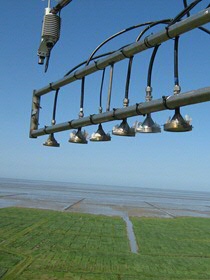
Het belangrijkste gas dat gemeten wordt in Lutjewad is het broeikasgas koolstofdioxide (CO2). Dit gas komt van nature al voor in de lucht maar door grootschalige verbranding van fossiele brandstoffen (aardgas, steenkool, aardolie) komt er steeds meer CO2 in de atmosfeer. Door naast de CO2 concentratie ook de isotopen 13CO2 en 14CO2 en allerlei zogenaamde tracers te meten kan meer informatie worden verkregen over de herkomst van de gemeten CO2. Hiernaast meten we onder andere ook nog de minder bekende broeikasgassen methaan (CH4) en lachgas (N2O).
Meetgegevens van station Lutjewad worden gekoppeld aan meetgegevens van soortgelijke stations elders in de wereld om zo een steeds beter beeld te krijgen van de veranderende atmosfeer.
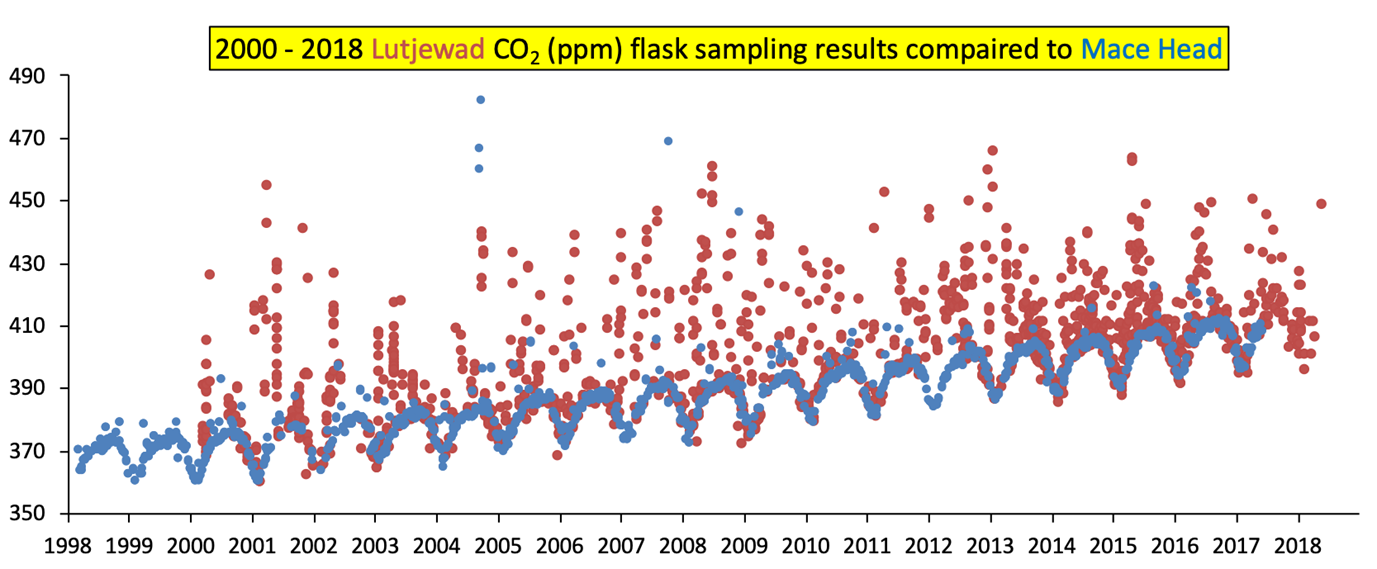
De locatie bij Hornhuizen is ideaal voor atmosferische metingen omdat het ver verwijderd is van grote verstorende koolstofdioxide bronnen zoals fabrieken. De hoogte van de mast zorgt ervoor dat ook lokale bronnen, zoals de tractor van de boer, niet worden gemeten. Op deze manier wordt bij noordenwind echt schone Europese achtergrondlucht gemeten. Bij zuidenwind wordt lucht gemeten die regionaal is beïnvloed door zowel de biosfeer als de mens.
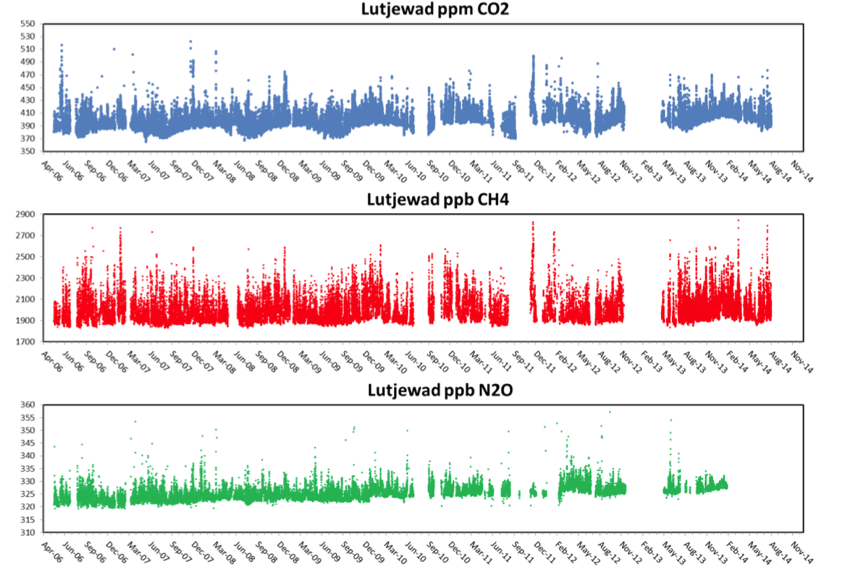
Ook worden allerlei fijnstof (aerosol) metingen gedaan en monsters genomen in de kleine container en de steigermast, van een hoogte van 20m. Fijnstof is een belangrijke component van luchtverontreiniging door gebruik van fossiele brandstoffen (en biomassa). Naast gezondheidseffecten speelt fijnstof ook een belangrijke rol in het klimaat van de aarde doordat het wolkenvorming en daarmee de neerslag beïnvloed en doordat het afvankelijk van de samenstelling een verkoelende danwel opwarmende werking heeft in de atmosfeer. Onderzoek naar fijnstof op Lutjewad richt zich met name op de bronnen, bronsterkte en chemische samenstelling van fijnstof.
Op de steigermast staan twee ‘druppel radarsystemen’, in samenwerking met de TU-Delft. Deze meten de druppel grootte in de atmosfeer, tot ca 10 km afstand. Dit is weer gekoppeld aan de hoeveelheid fijnstof in de lucht.
Real time data
GHG monitoring
Timeseries:
- 3 days | for Lutjewad go to P0004.4_LUT_465.png
- 10 days | for Lutjewad go to P0004.3_LUT_465.png
- last month | for Lutjewad go to P0004.3_2_LUT_465.png
- last year | for Lutjewad go to P0004.3_1_LUT_465.png
Meteorological measurements
Timeseries:
- 3 days | for Lutjewad go to P0005.04_LUT.png
- 10 days | for Lutjewad go to P0005.03_LUT.png
- last month | for Lutjewad go to P0005.02_LUT.png
- last year | for Lutjewad go to P0005.01_LUT.png
Bezoek gerelateerde websites
- Het Europese netwerk (ICOS) | https://icos-atc.lsce.ipsl.fr
- Ruisdeal observatorium. Atmosferische onderzoeksgroepen in Nederland | https://www.ruisdael-observatory.nl
- Was het donker? Een donker sensor op locatie Hornhuizen (Lutjewad) | http://www.washetdonker.nl
- TU Delft. Remote sensing mbv radar systemen | https://www.tudelft.nl/citg/over-faculteit/afdelingen/geoscience-remote-sensing
- KNMI | https://www.knmi.nl/kennis-en-datacentrum/uitleg/meetmast-cabauw
- Bliksem detectie netwerk. Lutjewad wordt 1 van de meetpunten | https://www.knmi.nl/kennis-en-datacentrum/uitleg/bliksemmetingen
- Het RIVM heeft door heel Nederland een fijnstof sensor netwerk. Lutjewad is een van de stations. | https://samenmeten.rivm.nl/dataportaal/
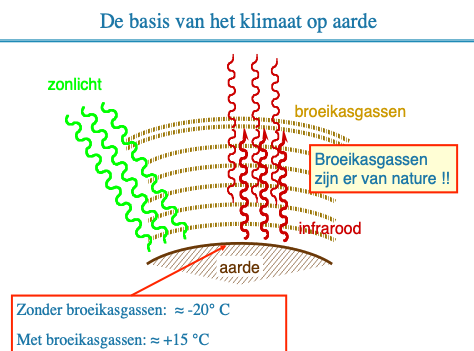
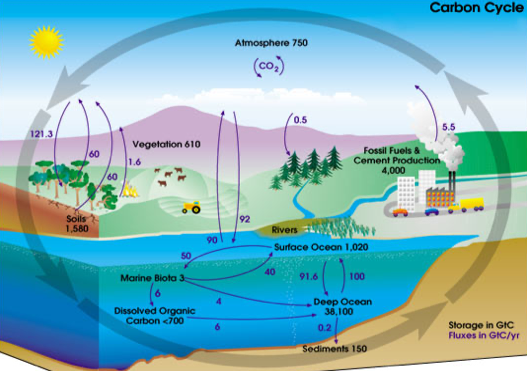
| Laatst gewijzigd: | 17 januari 2022 15:21 |


